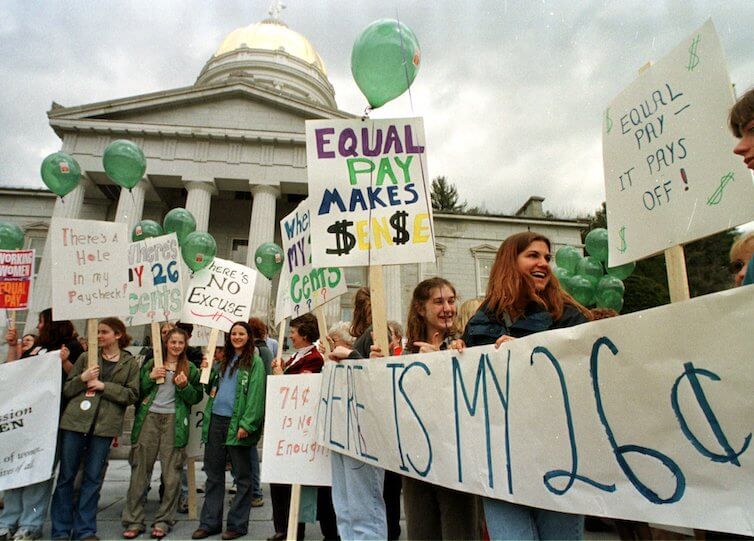Do U.S. women choose low-paid occupations, or do low-paid occupations choose them?

Tomorrow is Equal Pay Day, a “holiday” in the United States that symbolizes how far into the year women must work to earn what men did the previous year. Today, women earn 20 percent less than men on average—for African American women and Latinas, that disparity is much wider. The gender pay gap exists for many reasons, among them flat-out discrimination and the burden of outside-the-office family responsibilities, which women continue to shoulder disproportionately. And then, there are the many women who work in different jobs than men do—jobs that happen to pay less.
Skeptics of the gender wage gap point to these types of jobs as evidence that the gap does not exist. Once you account for differences in women’s employment choices, they argue, the wage gap disappears, or at least shrinks substantially. But citing “choice” to discount the gender wage gap’s existence fails to account for the social and economic factors that shape work-life decisions, as well as how society at-large values women’s work.
It is true that gender differences in occupations and industries accounts for more than half of that gap, according to research by Cornell University economists Francine Blau and Lawrence Kahn, making it the single largest factor. It is also true that many women go into lower-paid occupations. Teachers, childcare workers, and home health aides—what economists refer to as pink collar jobs—are all overwhelmingly women.
Why is it that men and women go into different occupations? First, expectations for girls and boys are set early and can have a profound effect on their later life choices, including what kinds of jobs kids eventually take. The research is clear that young girls believe boys to be better at math and science, even when their skills are equal or better to their male classmates. That perception may set little girls on a path to pursue different academic interests, most clearly illustrated by the current deficit of women in some of the highest-paying science, technology, engineering, and math, or STEM, jobs.
Women also are expected to take on a larger share of domestic duties, which may rule out certain jobs with long or inflexible hours. Research by Harvard University economist Claudia Goldin found that the wage gap is largest where the culture of face time and overwork are common. And Blau and Kahn find that dual-earner heterosexual couples are more likely to choose their location based on the man’s job, possibly limiting the options a woman has, depending on her occupation.
But then there is the growing body of research that shows the low pay of many female-dominant occupations has nothing to do with skills, but rather is simply because they are done by women. Occupations with more men tend to be paid better regardless of skill or education level. A study by Asaf Levanon of University of Haifa, Paula England of New York University, and Paul Allison of University of Pennsylvania shows that as more women enter a field, the overall pay tends to decline. The devaluation of women’s work is seen most clearly in the lowest paying—and fastest growing—occupations, which are mostly done by women. Almost two-thirds of all minimum-wage workers are women.
Of course, pure discrimination is also part of the story—Blau and Kahn estimate that it accounts for about 38 percent of the gender pay gap. This is illustrated by the fact that even within female-dominant occupations, men earn more. And as a larger share of women exit a field, the overall pay of that field goes up. Employers, it seems, place a lower value on work done by women regardless of their skills. Take computer science, which until about 30 years ago was known for being a “women’s field.” But in the mid 1980s, the number of women in computer science took a dive—just as personal computers marketed to boys and men began showing up in people’s homes. As computer programming became increasingly dominated by men, prestige and wages went up.
Discrimination does not just come in the form of a male worker getting paid more than his female colleague. Rather, it affects how society values whole industries and entire types of work—based on whether it’s done predominantly by men or women. Narrowing the gender wage gap means addressing the choices women feel they must make, as well as the biases we have as a society.

